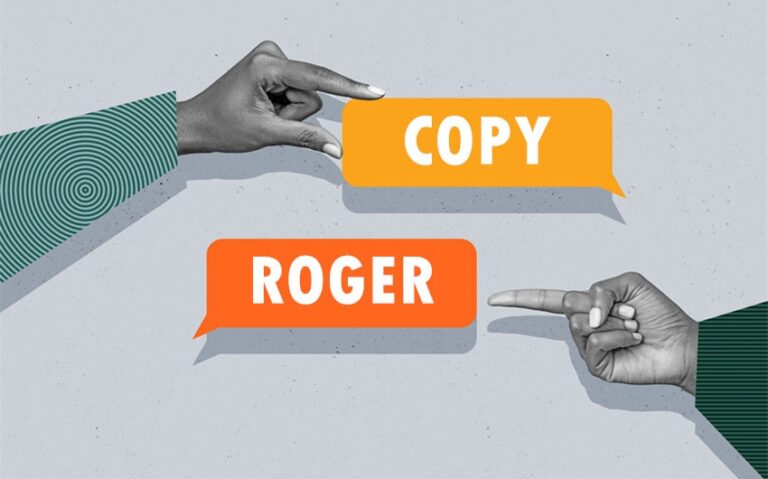Quantitative Research Titles: 220 Topics for Your Research
Crafting the perfect quantitative research titles can be a challenging yet essential step in any research project. A well-chosen title not only captures the essence of your study but also helps readers understand its focus and relevance at a glance. Whether you’re exploring trends, measuring outcomes, or analyzing relationships, a clear and precise title sets the tone for the entire research process.
In this article, we’ll discuss the key characteristics of effective quantitative research titles and share practical tips to help you create titles that are both impactful and informative. Let’s get started on your journey to research success!
Key Characteristics of a Good Quantitative Research Title
Crafting an effective quantitative research title requires careful consideration to ensure it captures the essence of your study while remaining clear and concise. Here are the essential characteristics explained in detail:
1. Clarity
A good quantitative research title should be straightforward and easy to understand. It should clearly state the main focus of the study, including the variables being measured and the population involved. Clarity ensures that readers can grasp the purpose of the research without needing further explanation.
For example, “The Effect of Study Habits on Academic Performance Among High School Students” explicitly outlines the variables (study habits and academic performance) and the target group (high school students), leaving no room for confusion.
2. Specificity
Specificity is key to a well-crafted research title. It should precisely define the scope of the study, including the key variables, population, or context being examined. By being specific, the title avoids vagueness and helps readers understand the study’s framework.
For instance, “A Quantitative Study on the Correlation Between Exercise Frequency and Mental Health in Urban Teenagers” clearly identifies the population (urban teenagers) and the variables (exercise frequency and mental health), offering a focused view of the research.
3. Objectivity
Objectivity is essential in quantitative research titles, as they should reflect a neutral and unbiased tone. Titles should focus on measurable variables and avoid any subjective language or assumptions about the study’s outcomes.
For example, “The Impact of Class Size on Student Engagement in Public Schools” avoids subjective terms like “better” or “worse” and focuses on the measurable factors of class size and engagement. This neutrality aligns with the empirical nature of quantitative studies.
4. Conciseness
A strong quantitative research title should be succinct, delivering essential information without unnecessary words. Striking a balance between being informative and concise makes the title easier to read and remember.
For instance, “The Relationship Between Sleep Quality and Academic Achievement in College Students” provides a clear summary of the study while avoiding redundancy, making it both reader-friendly and professional.
5. Focus on Measurable Variables
Quantitative research relies on numerical data, so the title should emphasize measurable factors or relationships between them. Highlighting these variables ensures the title aligns with the methodology and scope of the study.
For example, “The Effect of Daily Screen Time on Physical Activity Levels Among Adolescents” highlights specific variables (screen time and physical activity) that are quantifiable and directly relevant to the research.
6. Relevance to the Field
A relevant research title addresses topics that are meaningful and timely for the intended audience, whether academic, professional, or general. A strong title ensures the study contributes to its field and resonates with those interested in the topic.
For example, “The Influence of Employee Training Programs on Workplace Productivity in the Retail Industry” tackles a significant issue in business management, appealing to researchers and practitioners alike.
Examples of Quantitative Research Titles by Field
Education
Quantitative research in education helps uncover patterns and relationships that shape learning experiences. Whether it’s examining teaching methods, student behavior, or academic performance, these studies provide valuable insights for educators, students, and policymakers. By analyzing measurable outcomes, this category fosters improvements in educational strategies and policies.
- “The Impact of Homework Duration on Student Academic Performance”
- “A Correlation Between Class Participation and Test Scores Among High School Students”
- “The Effect of Peer Tutoring on Math Achievement in Grade 10 Students”
- “The Relationship Between Reading Frequency and Vocabulary Development in Elementary Students”
- “The Impact of School Attendance on Dropout Rates in Rural Areas”
- “The Effect of Bilingual Education on Standardized Test Scores”
- “The Role of Technology in Improving Learning Outcomes in Science Classes”
- “A Study of Teacher Feedback and Student Motivation in Senior High Schools”
- “The Relationship Between Classroom Size and Student Engagement Levels”
- “The Effectiveness of Online Learning Tools on Student Performance During the Pandemic”
- “The Role of Parent Involvement in Academic Achievement in Middle School Students”
- “The Relationship Between Time Management and Academic Stress Among College Students”
- “The Effect of Study Habits on Retention Rates in Senior High School”
- “A Quantitative Study on the Impact of Extracurricular Activities on GPA”
- “The Relationship Between Teacher Enthusiasm and Student Interest in Science”
- “The Role of Group Projects in Improving Critical Thinking Skills in High School”
- “The Impact of Attendance Monitoring Systems on Tardiness Rates”
- “A Correlation Study Between Morning Classes and Student Productivity”
- “The Relationship Between Library Access and Academic Success in Low-Income Areas”
- “The Effect of Scholarships on College Enrollment Among Disadvantaged Students”
Health and Medicine
Quantitative research in health and medicine is critical for understanding the factors that influence well-being. By focusing on measurable data like exercise routines, dietary habits, or disease prevalence, this category empowers healthcare professionals to create evidence-based solutions for improving public health outcomes.
- “The Impact of Daily Exercise on Stress Reduction in Adults”
- “The Relationship Between Water Intake and Kidney Function in Adolescents”
- “The Effect of Sleep Duration on Memory Retention Among Seniors”
- “A Quantitative Analysis of Screen Time and Vision Problems in Children”
- “The Role of Preventive Health Checkups in Early Detection of Illnesses”
- “The Effectiveness of Vaccination Campaigns on Disease Prevention in Rural Communities”
- “The Impact of Dietary Habits on the Incidence of Heart Disease”
- “A Correlation Between Smoking and Lung Capacity Among Young Adults”
- “The Effect of Meditation on Blood Pressure Levels in Middle-Aged Individuals”
- “The Relationship Between Work-Life Balance and Mental Health Among Nurses”
- “The Role of Fitness Apps in Promoting Regular Physical Activity”
- “A Study on Antibiotic Resistance Rates in Urban vs. Rural Hospitals”
- “The Impact of Social Support Networks on Recovery from Depression”
- “The Effect of Sugar Intake on Obesity Rates in Teenagers”
- “The Relationship Between Hand Hygiene Compliance and Infection Rates in Hospitals”
- “The Effect of Yoga on Anxiety Levels in University Students”
- “The Impact of Health Literacy on Medication Adherence in Older Adults”
- “A Quantitative Study of the Effectiveness of Fluoride in Preventing Tooth Decay”
- “The Role of Nurse-to-Patient Ratios in Reducing Healthcare Errors”
- “The Correlation Between Air Quality and Respiratory Illnesses in Urban Areas”
Business and Marketing
In the fast-paced world of business and marketing, quantitative research is essential for making data-driven decisions. From analyzing consumer behavior to assessing the impact of marketing strategies, this category helps businesses optimize their operations and stay competitive in an ever-changing market.
- “The Relationship Between Brand Loyalty and Customer Retention in Retail”
- “The Effect of Product Packaging on Consumer Buying Behavior”
- “A Quantitative Study on the Role of Discounts in Driving Sales”
- “The Impact of Social Media Marketing on Brand Awareness Among Millennials”
- “The Relationship Between Advertising Frequency and Consumer Purchase Intentions”
- “The Effect of Customer Service Quality on Online Store Ratings”
- “A Study on the Role of Seasonal Promotions in Retail Sales”
- “The Impact of Employee Training Programs on Workplace Productivity”
- “The Correlation Between E-Commerce Growth and Brick-and-Mortar Store Decline”
- “The Effect of Personalized Marketing on Customer Engagement in Small Businesses”
- “The Role of Influencer Marketing in Driving Teen Purchases”
- “A Quantitative Analysis of Consumer Spending Habits During Economic Recessions”
- “The Relationship Between Customer Feedback and Product Development Cycles”
- “The Effect of Mobile Payment Options on Retail Sales”
- “The Role of Corporate Social Responsibility in Enhancing Brand Image”
- “The Impact of Loyalty Programs on Customer Spending in Grocery Stores”
- “A Study of Brand Perception Across Different Age Groups”
- “The Relationship Between Delivery Speed and Customer Satisfaction in E-Commerce”
- “The Effect of Product Reviews on Consumer Trust in Online Platforms”
- “A Quantitative Analysis of Local Business Adaptation to Global Trends”
Technology
Technology continues to revolutionize how we live and work, and quantitative research in this field explores its impact on individuals and organizations. This category focuses on measurable outcomes like efficiency, user satisfaction, and innovation, offering insights into how technology shapes modern society.
- “The Effect of AI Chatbots on Customer Service Satisfaction”
- “The Relationship Between Smartphone Addiction and Productivity in College Students”
- “The Role of Virtual Reality in Enhancing Training Programs”
- “The Impact of Data Analytics on Business Decision-Making in Retail”
- “The Effectiveness of Cybersecurity Awareness Campaigns in Preventing Phishing Attacks”
- “The Correlation Between Internet Speed and E-Commerce User Satisfaction”
- “The Impact of Mobile Applications on Financial Literacy Among Youth”
- “A Study on the Effectiveness of Smart Home Technology on Energy Savings”
- “The Role of Blockchain Technology in Reducing Financial Fraud”
- “The Relationship Between Video Game Usage and Cognitive Development in Children”
- “The Effectiveness of Telemedicine Platforms in Rural Healthcare Access”
- “The Role of Wearable Devices in Monitoring Chronic Conditions”
- “A Quantitative Analysis of Cloud Storage Adoption in Small Businesses”
- “The Impact of Digital Payment Systems on Small-Scale Retailers”
- “The Relationship Between Tech Skills and Employability in IT Graduates”
- “The Effect of Mobile Learning Apps on Exam Preparation Efficiency”
- “The Role of Augmented Reality in Enhancing Museum Visitor Experiences”
- “A Study on the Integration of AI in E-Commerce Logistics”
- “The Correlation Between Online Privacy Awareness and App Usage Patterns”
- “The Effect of Automation on Job Satisfaction in Manufacturing Industries”
Environmental Studies and Sustainability
Quantitative research in environmental studies examines the measurable effects of human activity on the planet. By analyzing data related to pollution, conservation efforts, and climate change, this category helps develop sustainable solutions for preserving natural resources and combating environmental challenges.
- “The Impact of Urban Green Spaces on Air Quality in Cities”
- “The Relationship Between Waste Segregation Practices and Recycling Rates in Households”
- “The Effectiveness of Solar Energy Adoption in Reducing Electricity Costs”
- “A Quantitative Study on Water Usage Patterns in Rural vs. Urban Areas”
- “The Role of Eco-Friendly Packaging in Reducing Plastic Waste”
- “The Correlation Between Public Transport Usage and Carbon Emissions in Urban Areas”
- “The Impact of Community Clean-Up Drives on Waste Management Awareness”
- “The Effectiveness of Rainwater Harvesting Systems in Increasing Water Supply”
- “The Role of Environmental Education in Shaping Recycling Habits Among Students”
- “The Relationship Between Climate Change Awareness and Sustainable Lifestyle Choices”
- “The Effect of Urban Tree Planting Programs on Reducing Heat Islands”
- “A Study on the Impact of Overfishing on Local Fishing Economies”
- “The Relationship Between Household Income and Renewable Energy Adoption”
- “The Effectiveness of Composting Programs in Reducing Organic Waste in Schools”
- “The Impact of Electric Vehicles on Urban Air Pollution Levels”
- “The Role of Government Subsidies in Promoting Solar Panel Installations”
- “The Relationship Between Public Awareness Campaigns and Water Conservation Efforts”
- “The Effect of Climate Change on Agricultural Yields in Coastal Areas”
- “The Role of Local Policies in Enhancing Waste Recycling Efficiency”
- “The Relationship Between Eco-Tourism and Local Community Economic Development”
Psychology and Social Behavior
Understanding human behavior through quantitative research sheds light on the factors that shape thoughts, emotions, and actions. This category explores measurable relationships, such as the impact of stress on performance or the role of social media in mental health, providing data to inform interventions and policies.
- “The Relationship Between Social Media Use and Anxiety Levels in Teenagers”
- “The Effect of Positive Reinforcement on Academic Performance in Young Children”
- “The Correlation Between Stress Levels and Sleep Quality in Working Professionals”
- “The Impact of Parental Involvement on Adolescent Emotional Well-Being”
- “The Effect of Group Therapy on Reducing Social Anxiety in Adults”
- “The Relationship Between Exercise Frequency and Mood Stability in College Students”
- “The Impact of Peer Pressure on Risky Behaviors Among High School Students”
- “The Role of Gratitude Practices in Reducing Depression Symptoms”
- “The Effect of Music Therapy on Memory Retention in Seniors”
- “The Correlation Between Gaming Addiction and Academic Performance in Middle School Students”
- “The Impact of Childhood Trauma on Interpersonal Relationships in Young Adults”
- “The Role of Emotional Intelligence in Conflict Resolution Among Couples”
- “The Relationship Between Mindfulness Practices and Stress Reduction in Working Parents”
- “The Effect of Media Consumption on Body Image Perception Among Teenagers”
- “The Impact of Isolation on Social Skills Development During the Pandemic”
- “The Role of Community Support in Coping with Grief”
- “The Correlation Between Leadership Traits and Team Performance in College Projects”
- “The Effect of Smartphone Usage on Attention Span in Children”
- “The Impact of Cultural Values on Communication Styles in Multicultural Teams”
- “The Relationship Between Gratitude Journaling and Happiness Levels in Adults”
Public Health and Wellness
Quantitative research in public health focuses on identifying patterns and relationships that impact community well-being. By analyzing data on nutrition, exercise, or healthcare access, this category supports efforts to improve public health initiatives and promote healthier lifestyles.
- “The Relationship Between Diet Diversity and Nutritional Status in Rural Communities”
- “The Impact of Health Education Campaigns on Hygiene Practices in Schools”
- “The Effectiveness of Vaccination Programs in Reducing Measles Outbreaks”
- “The Correlation Between Physical Activity and Heart Disease Risk in Adults”
- “The Effect of Health Literacy on Medication Adherence in Chronic Illness Patients”
- “The Impact of Fast Food Consumption on Obesity Rates in Urban Teenagers”
- “The Role of Community Fitness Programs in Promoting Regular Exercise”
- “The Relationship Between Air Pollution Levels and Respiratory Illness in Children”
- “The Effectiveness of Mental Health Helplines in Reducing Suicide Rates”
- “The Role of Mobile Health Apps in Tracking Diabetes Management”
- “The Correlation Between Water Quality and Gastrointestinal Diseases in Rural Areas”
- “The Effectiveness of Smoking Cessation Programs in Urban Hospitals”
- “The Impact of Workplace Wellness Initiatives on Employee Productivity”
- “The Role of Peer Support Groups in Managing Addiction Recovery”
- “The Relationship Between Socioeconomic Status and Access to Healthcare Services”
- “The Effect of Physical Therapy on Recovery Times for Knee Injuries”
- “The Correlation Between UV Exposure and Skin Cancer Incidence”
- “The Impact of Telemedicine on Healthcare Accessibility in Remote Areas”
- “The Effectiveness of School-Based Nutrition Programs in Preventing Malnutrition”
- “The Role of Family Support in Managing Chronic Illnesses”
Economics and Labor
Quantitative research in economics and labor provides measurable insights into how policies, market trends, and workforce dynamics influence economic outcomes. This category is vital for understanding the challenges and opportunities faced by businesses, governments, and workers in diverse economic environments.
- “The Impact of Minimum Wage Policies on Small Business Growth”
- “The Correlation Between Job Satisfaction and Employee Retention in Retail”
- “The Effect of Inflation on Household Spending Patterns in Urban Areas”
- “The Role of Microfinance Institutions in Supporting Rural Entrepreneurs”
- “The Relationship Between Remote Work and Productivity in Tech Companies”
- “The Effectiveness of Job Training Programs in Reducing Unemployment Rates”
- “The Impact of Economic Downturns on Consumer Confidence in Developing Economies”
- “The Role of Freelance Platforms in Reshaping Traditional Employment Models”
- “The Correlation Between Trade Policies and Export Growth in Small Economies”
- “The Effect of Consumer Spending Trends on Small Business Profit Margins”
- “The Role of Financial Literacy in Debt Management Among Young Adults”
- “The Relationship Between Automation and Job Displacement in Manufacturing”
- “The Effectiveness of Tax Incentives on Business Investment Growth”
- “The Impact of Interest Rate Hikes on Real Estate Sales”
- “The Role of Labor Unions in Negotiating Fair Wages for Workers”
- “The Relationship Between Tourism and Economic Growth in Coastal Regions”
- “The Effect of Trade Agreements on Small-Scale Farmers in Rural Areas”
- “The Correlation Between Consumer Credit Access and Economic Development”
- “The Impact of Transportation Infrastructure on Job Accessibility in Urban Areas”
- “The Role of Entrepreneurship in Driving Economic Growth in Developing Countries”
Human Resources and Workplace Dynamics
Quantitative research in human resources examines the measurable factors that drive productivity, job satisfaction, and employee retention. This category helps organizations implement effective strategies to improve workplace culture and achieve their goals while supporting employee well-being.
- “The Impact of Flexible Work Hours on Employee Productivity in Tech Firms”
- “The Relationship Between Workplace Diversity and Job Satisfaction in Multinational Companies”
- “The Effect of Leadership Styles on Employee Retention in Small Businesses”
- “The Correlation Between Team-Building Activities and Employee Collaboration in Retail Organizations”
- “The Role of Employee Wellness Programs in Reducing Workplace Burnout”
- “The Impact of Transparent Communication on Employee Morale in Startups”
- “The Effect of Performance Appraisals on Motivation Levels in Public Sector Employees”
- “The Relationship Between Training Programs and Skill Development in Manufacturing Workers”
- “The Role of Workplace Recognition in Enhancing Employee Engagement”
- “The Correlation Between Work-Life Balance and Job Satisfaction in Healthcare Professionals”
- “The Impact of Remote Work on Team Dynamics in Global Corporations”
- “The Effectiveness of Conflict Resolution Training on Workplace Harmony”
- “The Relationship Between Managerial Support and Employee Creativity in Tech Firms”
- “The Role of Career Development Opportunities in Employee Retention in SMEs”
- “The Correlation Between Workload Distribution and Stress Levels Among Office Employees”
- “The Impact of Open-Plan Offices on Employee Focus in Advertising Agencies”
- “The Relationship Between Flexible Leave Policies and Employee Loyalty”
- “The Effect of Onboarding Practices on Employee Performance During the First Year”
- “The Role of Organizational Culture in Shaping Employee Performance in Startups”
- “The Correlation Between Employee Turnover Rates and Job Satisfaction in Call Centers”
Technology in Education
The integration of technology into education offers new opportunities for enhancing learning. Quantitative research in this field focuses on evaluating the impact of tools like apps, virtual reality, and e-learning platforms on student engagement and performance, driving the future of education.
- “The Impact of Interactive Learning Apps on Student Performance in Mathematics”
- “The Relationship Between Virtual Reality Tools and Science Concept Retention in High School Students”
- “The Effect of Online Homework Platforms on Study Habits in College Students”
- “The Role of E-Books in Enhancing Reading Comprehension Among Elementary Students”
- “The Correlation Between Mobile Learning Apps and Academic Motivation in Teenagers”
- “The Effectiveness of Gamification in Improving History Learning Outcomes”
- “The Impact of Internet Access on Research Skills Development in Senior High School Students”
- “The Role of Artificial Intelligence in Assisting Students with Learning Disabilities”
- “The Correlation Between Video Tutorials and Exam Preparation Success Rates”
- “The Effectiveness of Online Discussion Forums in Enhancing Peer Collaboration in College”
- “The Relationship Between Technology Integration in Classrooms and Teacher Productivity”
- “The Effect of Computer-Based Testing on Student Exam Anxiety Levels”
- “The Role of Digital Whiteboards in Improving Lesson Delivery in Secondary Schools”
- “The Correlation Between Flipped Classroom Models and Student Engagement”
- “The Impact of Learning Management Systems on Assignment Completion Rates in Universities”
- “The Role of Mobile Devices in Enhancing Field Research in Science Subjects”
- “The Effectiveness of Augmented Reality in Teaching Practical Geometry Concepts”
- “The Relationship Between Teacher Training in Technology and Classroom Efficiency”
- “The Effect of Digital Libraries on Study Habits Among Senior High Students”
- “The Role of Real-Time Feedback Tools in Improving Classroom Participation”
Arts and Media
Quantitative research in arts and media explores how creative industries and consumption patterns evolve in the digital age. From analyzing audience engagement to assessing the impact of digital tools on creativity, this category offers insights into the measurable aspects of artistic and media practices.
- “The Relationship Between Music Streaming Platforms and Listener Preferences Among Teenagers”
- “The Impact of Online Art Tutorials on Creative Skill Development in Beginners”
- “The Effect of Podcast Listening on Comprehension Skills in College Students”
- “The Role of Digital Art Tools in Shaping Creativity Among High School Students”
- “The Correlation Between Video Editing Software Use and Visual Storytelling Skills”
- “The Effectiveness of Short-Form Videos in Enhancing Learning of Historical Events”
- “The Relationship Between Art-Based Therapy and Stress Reduction in Adults”
- “The Impact of Photography as a Hobby on Self-Esteem in Young Adults”
- “The Role of Graphic Design Software in Enhancing Advertising Creativity in Marketing Students”
- “The Correlation Between Blogging Frequency and Writing Proficiency in High School Students”
- “The Effect of Music Education on Emotional Development in Elementary Students”
- “The Impact of Digital Animation Tools on Concept Visualization in STEM Subjects”
- “The Role of Social Media in Promoting Independent Artists to Global Audiences”
- “The Relationship Between Film Critique Activities and Analytical Thinking in Literature Classes”
- “The Effectiveness of Virtual Museum Tours in Enhancing Art Appreciation”
- “The Correlation Between Journalistic Practices and Credibility Perception Among Young Audiences”
- “The Role of Interactive Media in Strengthening Community Engagement in Local Events”
- “The Effect of Audiobooks on Reading Comprehension in College Students”
- “The Impact of Visual Storytelling on Emotional Messaging in Nonprofit Campaigns”
- “The Role of Photography in Documenting Cultural Heritage in Urban Communities”










